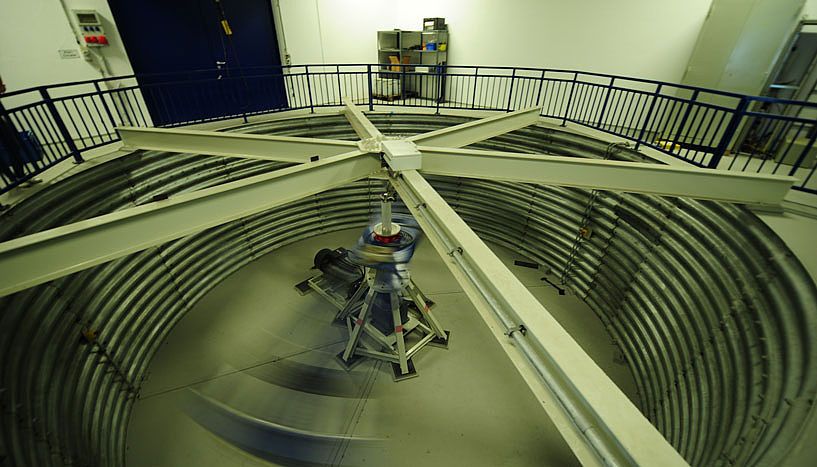Intelligent Machines
Scientists Are Turning Alexa into an Automated Lab Helper.
Amazon’s voice-activated assistant follows a rich tradition of researchers using consumer tech in unintended ways to further their work.

Blockchain, which serves as the underlying infrastructure for Bitcoin, is form of cryptocurrency that has become increasingly popular and experienced all-time high values in the last few months. One blockchain developer, Ethereum, has seen an all-time high in value: in recent weeks it’s topped out trading at over $40 per share.

(Phys.org)—In the non-intuitive quantum domain, the phenomenon of counterfactuality is defined as the transfer of a quantum state from one site to another without any quantum or classical particle transmitted between them. Counterfactuality requires a quantum channel between sites, which means that there exists a tiny probability that a quantum particle will cross the channel—in that event, the run of the system is discarded and a new one begins. It works because of the wave-particle duality that is fundamental to particle physics: Particles can be described by wave function alone.
Well understood as a workable scheme by physicists, theoretical aspects of counterfactual communication have appeared in journals, but until recently, there have been no practical demonstrations of the phenomenon. Now, a collaborative of Chinese scientists has designed and experimentally tested a counterfactual communication system that successfully transferred a monochrome bitmap from one location to another using a nested version of the quantum Zeno effect. They have reported their results in the Proceedings of the National Academy of Sciences.
The quantum Zeno effect occurs when an unstable quantum system is subjected to a series of weak measurements. Unstable particles can never decay while they are being measured, and the system is effectively frozen with a very high probability. This is one of the implications of the well known but highly non-intuitive principle that looking at something changes it in the quantum realm.


Einstein’s “spooky action at a distance” persists even at high accelerations, researchers of the Austrian Academy of Sciences and the University of Vienna were able to show in a new experiment. A source of entangled photon pairs was exposed to massive stress: The photons’ entanglement survived the drop in a fall tower as well as 30 times the Earth’s gravitational acceleration in a centrifuge. This was reported in the most recent issue of Nature Communications. The experiment helps deepen our understanding of quantum mechanics and at the same time gives valuable results for quantum experiments in space.
Einstein’s theory of relativity and the theory of quantum mechanics are two important pillars of modern physics. On the way of achieving a “Theory of Everything,” these two theories have to be unified. This has not been achieved as of today, since phenomena of both theories can hardly be observed simultaneously. A typical example of a quantum mechanical phenomenon is entanglement: This means that the measurement of one of a pair of light particles, so-called photons, defines the state of the other particle immediately, regardless of their separation. High accelerations on the other hand can best be described by the theory of relativity. Now for the first time, quantum technologies enable us to observe these phenomena at once: The stability of quantum mechanical entanglement of photon pairs can be tested while the photons undergo relativistically relevant acceleration.

Staff members who die will be put in cold storage until medical science can revive them.
Since congressional Republicans voted in a bill containing the Trump administration’s roll back of the Affordable Care Act, healthcare is once again a topic on everyone’s lips. In the absence of any universal healthcare scheme, employer-provided medical coverage is a crucial benefit for employees, tempting people to stay at jobs they might otherwise have left, or apply for positions they wouldn’t otherwise consider.
In the contest to attract new hires, tech companies often supplement already generous salaries with comprehensive benefit packages, and in this vein one company has hit on a novel idea: A health plan that covers its employees beyond death and into the realms of a speculative future rebirth.
Watch footage from when world champion drone pilot Chad Novak took off in CERN Data Centre.
Video produced by: CERN Video Productions
Director: Mike Struik
Camera: Chad Nowak
Copyright © 2017 Terms of use: http://copyright.web.ch/
To create a new drug, researchers have to test tens of thousands of compounds to determine how they interact. And that’s the easy part; after a substance is found to be effective against a disease, it has to perform well in three different phases of clinical trials and be approved by regulatory bodies.
It’s estimated that, on average, one new drug coming to market can take 1,000 people, 12–15 years, and up to $1.6 billion.


Voice responses from Alexa are now enhanced with visuals and optimized for visibility across the room. Call or message your family and friends that also have an Echo or the Alexa App, get the news with a video flash briefing, see your Prime Photos, shop with your voice, see lyrics with Amazon Music, and more. All you have to do is ask.
Echo Show has eight microphones and beam-forming technology so it can hear you from across the room—even while music is playing. Echo Show is also an expertly tuned speaker that can fill any room with immersive audio powered by Dolby. When you want to use Echo Show, just say the wake word “Alexa” and Echo Show responds instantly.